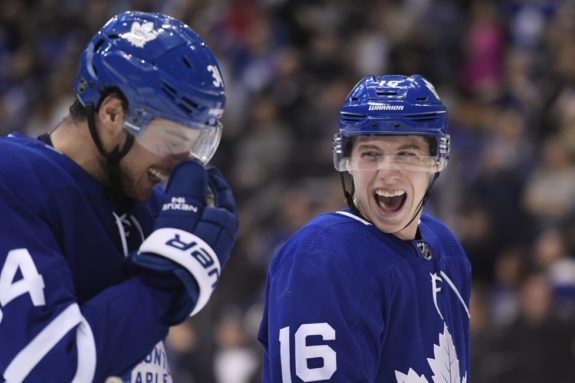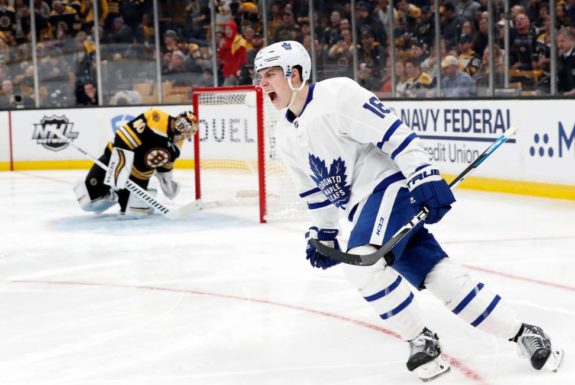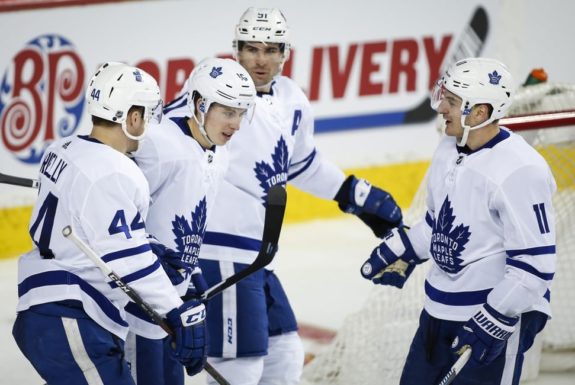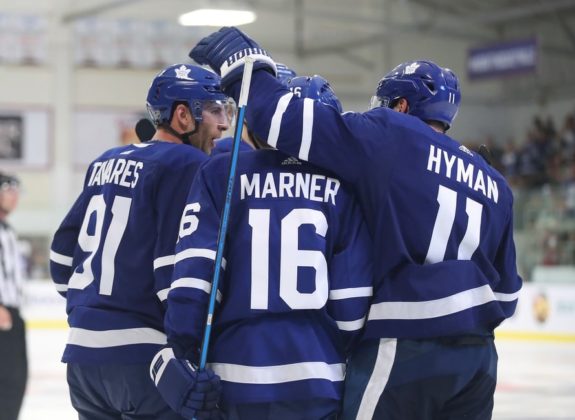On Dec 3, 2018, the Sportsnet’s Chris Johnston reported that NHL commissioner Gary Bettman had released his expectation that the league’s salary cap would increase to roughly $83 million for the 2019-20 season. Bettman projected a $3.5-million increase over the 2018-19 season’s salary cap of $79.5 million.

Apparently, newer projections about NHL revenue have revised that earlier projection. Rumors began circulating on June 18 that the salary cap projections of about $83 million per team had been downgraded to $81.5 million.
Sportsnet’s Elliotte Friedman suggested that he believed the move to tighten the salary cap was an agreement between the NHL and NHLPA (the Players Association) as a way to “maintain labour peace” for two years until a new U.S. television deal is announced.
Friedman saw the recent New York Rangers and Winnipeg Jets trade involving Jacob Trouba as a perfect example of the changes coming. He noted his surprise at the trade because the Jets were asking for more and on paper, Trouba was worth a better return.
Related: The Maple Leafs & the 2019 NHL Entry Draft: Seeking Late-Round Gems
However, Friedman also noted, “In a hard cap system, the punishment for drafting and developing well is that you have to make choices. The Jets are a perfect example, but everyone is feeling it.”
The Collective Bargaining Agreement as a Problem
The Collective Bargaining Agreement between the NHLPA and the NHL sets the terms and conditions of employment for professional hockey players playing in the National Hockey League, as well as the rights of NHL clubs, the NHL, and the NHLPA.

Hockey fans will recall the 2012–13 NHL lockout, which cancelled much of the season and shortened the regular season to 48 games. The current Collective Bargaining Agreement was ratified by NHLPA membership on January 12, 2013, following that four-month lockout by NHL owners. This Agreement runs ten
Simply stated, this Agreement has become flawed. Although it was tenable when it was signed six years ago, the signees were unable to anticipate how the realities of the current NHL would be reshaped over time. Specifically, I agree with Friedman: I don’t believe either the Players Association or the team owners wanted to create a system where doing a good job drafting and developing your own players would result in a “punishment” for either the team or the players.
Related: Maple Leafs News & Rumors: Marner, Zaitsev, Hurricanes Trade, Marleau
My guess, and I obviously wasn’t there at the negotiations in 2013, was that both the Players Association and the owners believed that offer sheets and no salary arbitration for restricted free agents (RFAs) would better respect both the team’s and the individual player’s needs.
However, it hasn’t worked out that way. Offer sheets simply haven’t worked, and there simply are no “home-town discounts.” The results are likely to unfold during this summer as teams scramble to meet the “hard” (not negotiable) salary cap they will soon face.
How This Situation Impacts the Maple Leafs and Marner
On June 18, TSN Hockey Insider Bob McKenzie was interviewed on OverDrive on Toronto 1050 radio. He shared the news about the salary cap, suggesting that, instead of the $83 million projected, there’s a chance the cap would be set at about $81.5 million. If the Maple Leafs don’t make a substantial trade, that salary cap number makes the contract the Maple Leafs can offer Mitch Marner much lower than originally anticipated.
Interestingly, McKenzie echoed Friedman’s comment that, if a team drafted good players and developed them well until they were RFAs, that team – as McKenzie said it bluntly – was “screwed.” His point was that it was likely better to build a team through trades than player development. As the panel noted, that was the St. Louis Blue’s model for winning this season’s Stanley Cup.

Toronto Maple Leafs’ Zach Hyman (11), Morgan Rielly (44), Mitch Marner, and John Tavares (91) (THE CANADIAN PRESS/Jeff McIntosh)
If McKenzie is right, that’s where the Maple Leafs find themselves with their players – Morgan Rielly, Auston Matthews, Andreas Johnsson, Connor Brown, and William Nylander. McKenzie notes that these really good players will likely, because of the way the salary cap and negotiating contracts works, end up costing the team so much money that the team’s ability to keep their young stars is diminished.
These young players want to be paid fair-market contracts, regardless of what’s happening on their teams. McKenzie also noted the lack of an external mechanism (arbitration) to settle the salary dispute between the Maple Leafs and Marner. The only two choices are that the team pays him what he wants or Marner refuses to sign and withholds his services. That’s why Nylander and Matthews signed such lucrative contracts. Dubas paid.
Related: Maple Leafs Rumor: Is Marner Testing the Market? So What?
McKenzie noted that, when the Collective Bargaining Agreement was put into place and the entry-level system was built, the owners believed they held the power. However, without salary arbitration, the opposite has become the norm. Young players have usurped the power and forced teams to meet their demands.
These young players have become so good, so fast, and have grown to mean so much to their teams, which McKenzie notes is true all over the NHL, that they are setting their own comparables. In Marner’s case, McKenzie believed salary arbitration would allow an external arbitrator to use someone like Nikita Kucherov ($9.5 million) rather than teammate Matthews ($11.634 million).

For Maple Leafs fans and hockey fans in general, I encourage following the link above and listening to the podcast. In a level-headed way, without hype or being over-dramatic, McKenzie laid out the overwhelming problem the salary cap and the Collective Bargaining Agreement
What Happens Next?
I can’t imagine the Maple Leafs without Marner, arguably the team’s on-ice leader and best player. That said, I can’t imagine Marner or his agents acquiescing to a cap-friendly contract. That leaves the Maple Leafs with the same problem the Jets “solved” by trading Trouba. I believe the Maple Leafs will be forced to trade Marner, probably for less than he’s worth to a team he probably doesn’t want to play for. Marner has no say where he goes.
The Trouba trade was good for the Rangers. Great right-handed defensemen are hard to find. I hope Trouba will be happy because, when you’re 25 years old playing a game for a living, you should be. Plus, the defenseman is an American.
I’m less confident Marner will be as happy playing somewhere other than Toronto. But, that’s today’s NHL reality. If Marner is traded, as I suspect he will be soon, it will be a sad day for everyone. I will miss him on the Maple Leafs.